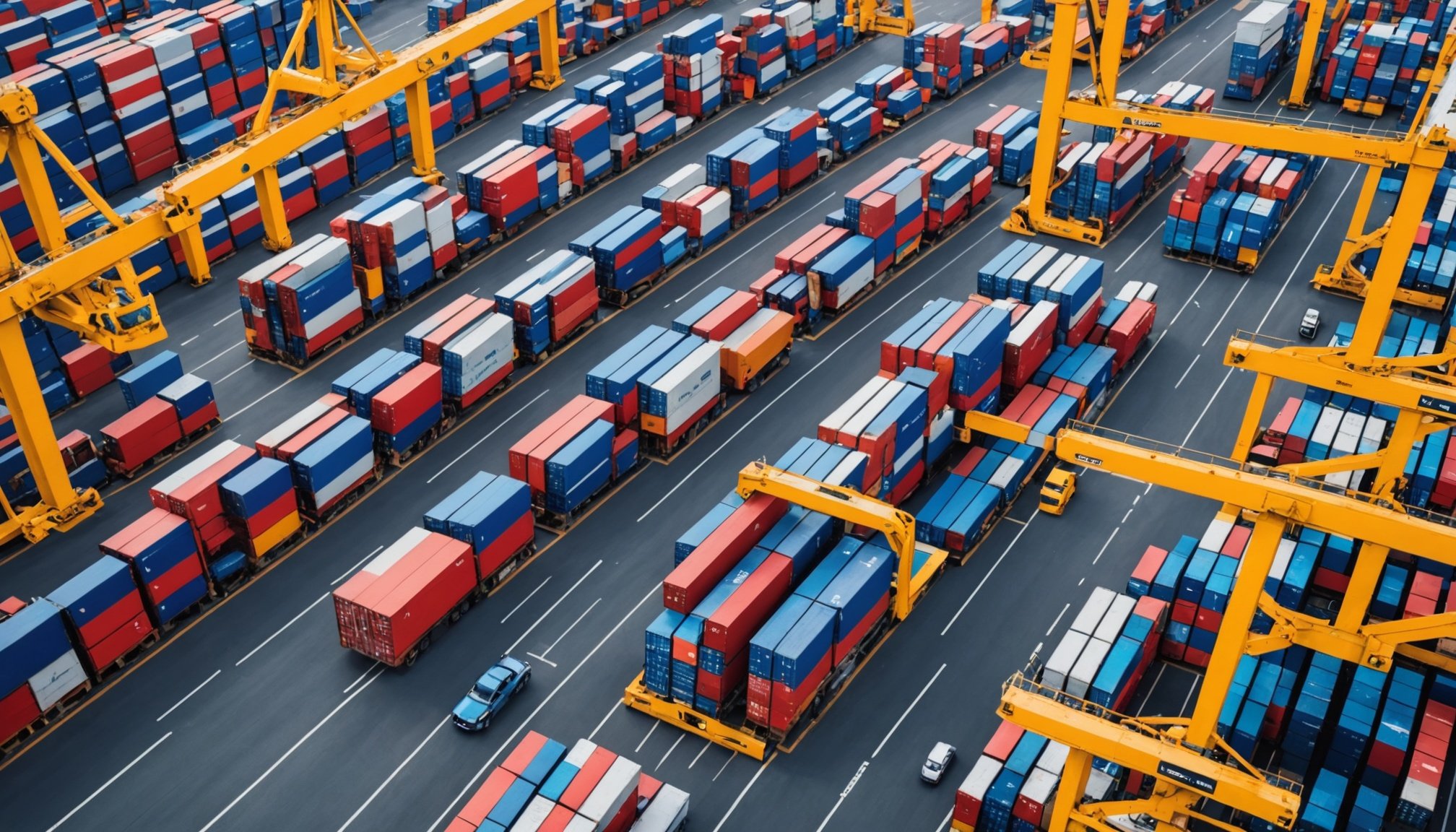Understanding AI-Powered Predictive Analytics in Supply Chain
In the fast-paced world of modern logistics, AI in the supply chain is revolutionising how businesses plan and operate. At the core of this transformation is predictive analytics, a technology that uses artificial intelligence to analyse historical data, identify patterns, and forecast future trends. This capability significantly enhances decision-making by providing supply chain managers with insights that were previously inaccessible.
Predictive analytics enables companies to foresee potential disruptions, optimise inventory levels, and improve demand forecasting. Companies can respond proactively rather than reactively, thus minimising bottlenecks and inefficiencies. By leveraging AI, they not only gain foresight into future challenges but also streamline operations, improving overall supply chain transformation.
Additional reading : Enhancing smart home living: how ai is redefining user experience in automation
The benefits of implementing predictive analytics are substantial:
- Increased efficiency via optimised resource allocation and reduced waste.
- Enhanced accuracy in demand forecasting leads to better stock management and customer satisfaction.
- Improved risk management due to precise prediction of potential risks, allowing for timely intervention.
In essence, AI-powered predictive analytics is not merely a trend but a necessity for companies striving for competitive advantage. It provides a strategic edge by transforming raw data into actionable insights, fundamentally changing how supply chains operate and succeed in today’s complex business landscape.
In the same genre : Revolutionizing healthcare: an innovative ai platform for early disease detection
Implementing AI-Powered Predictive Analytics
Implementing AI-powered predictive analytics requires careful planning and execution. An effective implementation strategy begins with evaluating your current supply chain processes. Identifying processes that can benefit from predictive models can lead to more data-driven decision making. A holistic review of existing systems helps in spotting inefficiencies and opportunities for improvement.
Steps for Successful Integration
To integrate AI successfully, follow these steps:
-
Assess Current Processes: Understand your supply chain’s existing workflow to pinpoint areas that can leverage predictive analytics. This includes looking at historical performance data and identifying patterns.
-
Identify Application Areas: Not all aspects of your supply chain may benefit equally from AI. Prioritise areas where predictive models can offer the highest value, such as demand forecasting or inventory management.
-
Build the Right Infrastructure: Ensure that your technology infrastructure can support AI integration. This involves investing in the right hardware and software to handle large datasets and complex data processing needs.
By paying careful attention to these steps during the implementation phase, businesses can achieve more precise predictions, better resource allocation, and ultimately, a stronger competitive edge.
Case Studies: Success Stories and Practical Insights
To demystify the potential of predictive analytics, let’s delve into some compelling case studies and success stories. These industry examples underscore the transformational impacts of these technologies.
One notable example is UPS. The logistics giant has leveraged predictive analytics to enhance its operational efficiency. By analysing data from delivery vehicles, UPS optimised routes, significantly reducing fuel consumption and delivery times. This not only slashed costs but also improved customer satisfaction—truly a logistical triumph.
Similarly, Netflix is another success story. The streaming service utilises predictive analytics for content recommendation. By studying viewer habits, Netflix predicts viewing preferences, thus increasing viewer engagement and subscription retention. Their lessons learned also include honing machine learning algorithms to refine predictions and cater to diverse audiences.
Another burgeoning sector reaping benefits is healthcare. Hospitals have employed predictive models to anticipate patient admissions, enhancing resource allocation and care quality. Such innovations, while improving operational efficiency, also reduce unnecessary expenditures, demonstrating tangible returns on investment.
In each case, a common theme emerges: the ability to make informed decisions through predictive analytics results in measurable improvements. These lessons shed light on strategic implementation, offering practical insights into adopting such technologies successfully across various industries.
Best Practices in Using AI for Supply Chain Management
Implementing AI best practices is crucial for enhancing efficiency in supply chain management. One of the pivotal practices is ensuring robust data management and integrity. This involves establishing standardized processes for collecting, storing, and analyzing data to maintain accuracy and reliability. By setting clear guidelines, businesses can harness the power of predictive analytics more effectively, leading to informed decision-making.
Another key aspect is the continuous training and upskilling of staff. Why is this important? Because as AI technologies evolve, so should the expertise of the workforce using them. Training programs aimed at improving digital proficiency ensure that teams stay updated with the latest tools, boosting productivity and innovation within the supply chain.
Effective stakeholder collaboration and communication represent fundamental AI best practices. Open channels of communication between different stakeholders—such as suppliers, manufacturers, and retailers—enhance coordination. Clear communication allows for addressing issues promptly, reducing delays and enhancing the overall supply chain efficiency.
In summary, focusing on data integrity, continuous learning, and stakeholder engagement are essential best practices. These practices not only optimize the use of AI technologies but also empower organizations to streamline supply chain processes, reduce risks, and improve outcomes. The integration of predictive analytics tips can lead to transformative improvements in supply chain management.
Challenges and Solutions in Predictive Analytics Implementation
Implementing predictive analytics can present several challenges requiring careful navigation for successful adoption. One primary hurdle is dealing with complex data privacy regulations. Ensuring data protection requires adherence to stringent policies, which can complicate integration processes, delaying deployment even further.
To overcome these hurdles, organizations can implement robust encryption methods and regular audits. This not only addresses privacy concerns but also enhances overall data security, building trust with stakeholders.
Financial implications also represent a significant challenge. Initial investments in technology and skilled personnel can strain budgets. However, maximizing ROI (Return on Investment) is possible with strategic planning. Investing in scalable solutions, which grow with your needs, minimizes waste. Additionally, starting with pilot projects allows for testing viability and learning without committing fully.
Overcoming obstacles in data quality is essential for effective predictive models. Inconsistent or inaccurate data leads to faulty predictions. Ensuring data accuracy through rigorous validation processes guarantees reliable outcomes.
Predictive analytics demands a balanced approach between innovation and practicality. By addressing privacy issues and financial constraints thoughtfully, organizations can not only mitigate these challenges but also leverage predictive analytics to its full potential, unlocking competitive advantages in their respective domains.
Future Trends in AI-Powered Predictive Analytics for Supply Chain
The supply chain evolution is set to accelerate with AI advancements driving new possibilities. Emerging technologies such as the Internet of Things (IoT), blockchain, and 5G will complement AI in logistics, enhancing data collection and connectivity. These technologies enable real-time tracking and supply chain optimization, ensuring quick responses to disruptions.
Looking ahead, predictions for the next decade suggest a seamless integration of AI with these new technologies. Supply chain systems are predicted to become more autonomous, reducing manual interventions and increasing efficiency. With advancements in AI, predictive models will become more accurate, facilitating better decision-making. This could lead to reduced costs and faster delivery times, heavily impacting the global market dynamics.
However, the adoption of predictive analytics might face challenges due to potential regulatory changes. Regulatory bodies are increasingly concerned with data privacy and ethical usage, which could affect how companies implement AI-driven solutions. Organizations will have to navigate these challenges, ensuring compliance while leveraging AI advancements.
To summarise, future trends in AI-powered predictive analytics signal a transformative phase for supply chains. Embracing these trends means staying ahead in the competitive logistics landscape through innovative solutions that promise increased efficiency and responsiveness.
Additional Resources and Tools for Practitioners
For those keen on expanding their understanding of AI in supply chain management, several resources and tools are invaluable. Starting with recommended readings, books such as “Artificial Intelligence for Supply Chain Management: Potential, Applications, and Challenges” offer in-depth insights. These handbooks explore the potential uses of AI, addressing both possibilities and challenges within the supply chain sphere.
Beyond literature, practitioners can engage in online courses and training modules. Platforms like Coursera and edX offer courses tailored to AI applications in supply chains, ranging from beginner to advanced levels, enabling learners to deepen their expertise at their own pace. Such courses often provide practical examples and interactive content to facilitate better understanding.
Engagement with forums and communities is another way to enhance one’s knowledge and network. Participation in online groups, such as those on LinkedIn or Reddit, allows practitioners to share experiences, discuss challenges, and seek advice from industry peers. These platforms serve as support systems and sometimes as a springboard for innovative ideas.
Exploring these additional tools and resources empowers professionals to stay abreast with evolving trends, further reading on AI advancements, and maintain a competitive edge in the ever-changing landscape of supply chain management.











